Rifle battle cruisers. Large light cruisers "Koreydzhes"
History their creation began almost simultaneously with the battle cruisers "Rhipals" and "Rinaun." Returning to the position of First Sea Lord, John "Jackie" Fisher initiated a giant shipbuilding program from more than 600 ships. The overwhelming majority of them were light - destroyers, patrol boats and minesweepers, submarines ... D. Fisher was absolutely right in the belief that ships of these types in war do not happen much. Rightly pointing to the lack of light forces of the fleet, he at the same time took into account the needs of the so-called “Baltic project”, whose ideas were then circulated in the Admiralty and the government of England. The essence of this project was the breakthrough of the Royal Navy to the Baltic Sea with the aim of landing a large landing of Russian or British troops on the coast of Pomerania - where, in general, Berlin could be reached.
In the previous article devoted to the Ripals and Rinaun battlecruisers, we already said that D. Fisher justified the need for their construction, including the need for high-speed, heavily armed ships with little draft for action in the Baltic. They also talked about the fact that this argument was very far-fetched, and that D. Fisher himself, having received a go-ahead for laying a pair of battle cruisers, immediately excluded a small draft from the project’s priorities, suggesting that the designers ensure it was possible. Most likely, the “Baltic project” was used by the First Sea Lord only as a “smoke screen” for dragging the battlecruisers dear to his heart, but this does not mean that he was not serious about the project itself. Apparently, D. Fisher considered the invasion of the Baltic and the landing of troops in Pomerania to be a very important and quite achievable task.
And yet, D. Fisher, apparently, could not reconcile with the fact that out of more than 600 ships of the new emergency program, high-speed and lightly armored ships with the heaviest guns are only two - Ripals and Rinaun. However, even the capabilities of the First Sea Lord did have limits, and he could not “advance” to construction a greater number of battle cruisers. The reason was quite banal - money. It is clear that, having entered the war, England began to bear the enormous costs of maintaining it, and the limits that the Treasury could scrape up for shipbuilding programs at 1915 g were exhausted by D. Fisher. Therefore, the Minister of Finance said that laying the new large ships is impossible, and there is no money in the treasury for anything bigger than light cruisers.
To great regret for British financiers, the minister did not specify what exactly should be considered a light cruiser. And the First Sea Lord, of course, immediately took advantage of this, including three “big light cruisers” in the shipbuilding program: this was the way Koreizhes, Glories and, a little later, Furyes appeared.
In accordance with the requirements of D. Fisher, the head of the military shipbuilding department, d'Eincourt, prepared a draft of the new ship. Its main features were:
1. A displacement sufficient to maintain travel speeds up to 32 knots. on a wave of medium height typical of the Northern and Baltic seas;
2. Draft equal to 6,71 m, that is significantly less than that of the battleships and battlecruisers of the Royal Navy. This would allow the “light cruiser” to operate in the shallow Baltic;
3. Armament of four 381-mm guns;
4. The thickness of the armor at the height from the waterline to the forecastle is not less than 76 mm;
5. The boules are installed in such a way that the most important spaces of the ship, including the engine and boiler rooms, are pushed as far as possible into the depths of the hull, and at least three longitudinal bulkheads should be separated from the board.
It was noted that the ship of this project will receive a very strong defense against mines and torpedoes, which should definitely be feared in the Baltic shallow waters. At the same time, heavy weapons will make him a dangerous enemy for a ship of any class, and a small draft will allow you to operate where the German ships have been ordered to move.
Of course, these qualities could not fit into the dimensions of the light cruiser - already in the original versions of the project, its normal displacement was, according to various data, from 17 400 to 18 600 t., And in the final version it reached 19 320 t from Koregides and "Gloriesa", while the sediment reached 7,14 m. But in a slightly larger "Furyes" it reached 19 513 t.
Artillery
The main caliber of Koreydzhes and Gloriesa were two two-gun towers, similar in their design to those installed on battle cruisers of the Rinaun type. Since the height of the axes of the guns above the waterline was 10,06 m for the nose tower and 7,01 m for the stern, we can say that their use was possible even in very fresh weather. As for the Furyes, this ship, the only one in the entire Royal Navy, received the 457-mm artillery system.
It must be said that the 457-mm guns were developed on the basis of the 381-mm artillery system, but were, of course, much more powerful than the latter. The weight of the projectile reached 1 507 kg, its initial speed - 732 m / s. However, it should be borne in mind that the data are given for a “hard-combat” charge containing 313 kg of gunpowder — with a normal, 286 kg charge; the initial velocity of the projectile was only 683 m / s. The maximum elevation angle was 30 degrees, which is 10 degrees. exceeded that of the Koreyges and Glories installations, while the range of 457-mm guns was 27 400 m or 148 cables, and with a reinforced combat 32 000 m or almost 173 KBT. Interestingly, even with such high rates, the barrel survivability was quite decent 250-300 shots.
The power of 457-mm projectiles was amazing. The content of explosive in the armor-piercing ammunition was 54 kg, in the high-explosive - enchanting 110,2 kg. At the same time, the armor-piercing projectile hit effortlessly crushed any conceivable armor - according to some information, he overcame the armor plate as thick as his own caliber (that is, 457-mm) at a distance of 75 kbt!
Nevertheless, even Koreydzhes and Glories, having four 381-mm guns, had some difficulty in zeroing, and even in those cases when they had the opportunity to conduct on-board fire, that is, to use both their towers and four guns. If it was necessary to pursue the enemy, or run away from him, then only two barrels could be fired, and this was completely insufficient for zeroing. Well, "Furyes", which instead of two-gun 381-mm towers received one-gun 457-mm, at some large distances could get into the enemy except by accident, especially since the maximum rate of fire of the artillery system was only 1 shot per minute.
Ammunition of the main caliber "Koreyges" and "Gloriesa" consisted of 480 shells, 120 shells per gun, originally - 72 armor-piercing. 24 semi-slaughter and 24 high-explosive. “Furyes” had the same 120 projectiles on the barrel - 40 armor-piercing and 80 semi-armored, high-explosive on it was not at all (by the way, the rest of the “big light cruisers” high-explosive shells were removed in 1917).
The Koreyges and Gloriesa mine caliber was represented by the same terrible three-gun 102-mm units that the Rinaun and Ripals received for armament and the shortcomings of which we analyzed in detail in the previous article. It was possible to install as many as six such installations on the “big light cruisers”, but this was the case when the quantity could not turn into quality. The British understood this very well themselves, but the 152-mm guns were too heavy for the "light" ships, and there were no other artillery systems. The Fury proved to be in an advantageous position - during its design they remembered that the fleet had sixteen 140-mm artillery systems requisitioned from ships under construction for Greece. These 140-mm guns were very formidable sea weapons, and were able to shoot 37,2 kg shells with an initial speed of 831 m / s. at a distance of 16 200 m or 87 cables. They were superior in all respects to 102-mm units, so that Furyes in its final version received 11 140-mm guns.
Anti-aircraft guns were represented by two 76-mm artillery systems, firing cannons on the "big light cruisers", apparently, were not installed (at least, no mention of this in the sources), except for Furyes, which received four 47-mm guns .
Torpedo armament consisted of two airborne torpedo tubes with a caliber of 533-mm, placed at the barbet of the nose tower. Ammunition made up 10 torpedoes. Surprisingly, the fact is - after the entry into service, the torpedo weaponry was significantly strengthened. So, Koreydzs received in addition 12 torpedo tubes in dual torpedo tubes mounted on the upper deck!
Reservation
In general, the level of body armor "Koreydzhes", "Gloriesa" and "Furyesa" slightly exceeded that of conventional light cruisers of the era.
The basis of the citadel consisted of 51-mm "armored plates", laid over the 25 mm boarding skin. The word "armored plates" is quoted because the 51 mm sheets, in fact, were not armor - they were made of so-called high-strength steel (NT or High Tensile). Such protection, unlike real armor, was not designed to fully resist the projectile, and assumed only that its fuse would work directly in the process of overcoming the steel sheet - in this case, the explosion energy could be held by the bulkheads inside the ship's hull. Still, the combination of 25 mm structural and 51 mm reinforced steel was not such a bad defense and could well reflect the 105-mm projectiles of German cruisers, and at long distances - probably 150-mm. The citadel began approximately from the middle of the barbet of the bow tower and to the end of the barbet aft. The only praiseworthy indicator was, perhaps, its height - 8,38 m, of which in the normal displacement of 1,37 m was under water. That is, the citadel's armor plates covered the cellars, machine and boiler rooms, and practically the entire surface of the ship, right up to the forecastle deck. In the stern, the citadel was “closed” by traverse, perpendicular to the diametral plane of the ship, but in the nose two rows of armor plates went at an angle from the side to the beginning of the barbet of the 381-mm tower. Traverses had a thickness of 76 mm.
From the citadel to the nose, the protection became thinner to 51 mm (probably 25,4 mm plating and the same amount of steel NT on top of it), while it was smaller in height and ended long before the stem, closed by traversing the same 51 mm thickness, the plates of which also converged ", That is, at an angle to the center plane of the ship.
The armored deck of the project was supposed to be even weaker than that of the Rinaun - instead of 25 mm in the horizontal part and 51 mm on the bevels Koreiges received 19 and 25 mm, respectively. However, after the Battle of Jutland, the project was hastily reworked, adding another 25 mm to the armored deck, so it reached the 44-51 mm. Interestingly, such an innovation, which significantly increased the protection of the cruiser, "cost" shipbuilders only 116 tons.
It must be said that the Koreydzhes horizontal defense was generally quite good - besides the above-mentioned armored deck, there was also the main deck, an inch thick (25,4 mm) above the citadel. The forecastle deck also received local reservation reinforcement — its thickness outside the citadel was 25 mm, and within the citadel its thickness reached 19-25 mm, but not over the whole deck area, but only at the sides. The lower deck was located below the waterline outside the citadel - it had a 25 mm thickness in the nose, and the same 25 mm in the stern, which increased to 76 mm above the steering.
The ships also received anti-torpedo bulkheads with a thickness of 38 mm, stretching across the citadel, from barbet to barbet - from the ends they “closed” 25 mm by traverses.
The towers of the main caliber had a similar booking with those that were installed on Rinaun-type cruisers - 229 mm front plate, 178 mm side plates and barbety. The latter, however, were heterogeneous - in the part facing the chimney their thickness decreased to 152 mm. It must be said that the barbettes had such a thickness down to the main deck, that is, for a considerable distance the feed pipes were protected not only by 178 mm by barbette, but also by 25 + 51 mm by bead steel or 76 mm by traverses. The 457-mm Furyes tower installations had similar protection, except that the side walls of the towers, like the front plates, were 229 mm thick.
The cabin had quite impressive 254 mm armor of the side walls, 76 mm flooring and roof thickness 51 mm. The aft wheelhouse (torpedo control) had 76 mm walls and 19-38 mm roofs.
Power plant
Unlike the Rinaun and Ripalsa, which “borrowed” the design of the machines and boilers of the Tiger battlecruiser, the Koreyjes power plant copied (with minor changes) the Kalliop-type light cruisers - only in double version, four turbine units instead of two and 18 boilers against 9. Due to the use of fine-tube boilers, this power plant had a better power density than the one on the Rinaun, which had a very beneficial effect on its weight. The nominal power should have been 90 000 hp, while the Koreyjesy should have steadily developed the 32 node, and the larger and wider Furyes - half a node less.
There are different opinions about what really happened. So, O. Parks writes that Koreydzhes and Glories in their daily use easily developed the 32 node, without giving any specifics, but VB Mujenikov gives the results of the run on the Arran measuring mile (where only the Glories was tested). According to his data, the power plant of the “big light cruiser” did not reach its planned capacity, showing only 88 550 hp, which ensured the speed of the ship 31,25 knots. However, the following fact leads to reflections: VB Muzhennikov indicates that the ship has developed this speed, being in its design normal displacement, that is, 17 400 t. But the actual normal displacement of the ship was 19 320 t, and even O. Parks indicates 18 600 t! Obviously, in such a normal displacement, the speed of the Glories would be even lower, apparently it would be somewhere between the 30 and 31 node, probably no more than 30,5 knots. On the other hand, VB Mujenikov points out that at Koreydzs with the power of 93 700 hp mechanisms showed 31,58 knots, and with 91 200 hp - 30,8 bonds, while the displacement of the ship was 22 100 t.
In other words, the data on the speed of the “big light cruisers” are very contradictory, although, no doubt, they were very fast.
The fuel reserves were at a normal displacement of 750 t for all three ships, with a full displacement - 3 160 t for Glories and Koreiges, and 3 393 t for Furyes. It was assumed that a full stock would give them a range in 6 000 miles at a speed of 20 knots, which would be an extremely outstanding result.
Project Evaluation
As we have repeatedly said before, the ship should be judged by its ability to carry out the tasks assigned to it. And with this “big light cruisers” things are not just bad, but very bad - not because they did not meet their tasks, but because when they were created, no one has formulated a list of tasks for ships of such a strange class.
It is known that the “big light cruisers” appeared thanks to the views of the First Sea Lord, but, alas, D. Fisher himself voiced for them only one task - shelling the shores:
The first sea lord was very poetic — the human gaze would easily cover even the crater of a megaton nuclear explosion, and, with all due respect for the British 381-mm artillery, its projectiles were a little less destructive. But logically, for the shelling of the coast, two characteristics of a warship are most useful - this is the firing range and draft. Obviously, the farther the ship's cannons can drop their shells, the more time the troops advancing will receive their support. It is no less obvious that the smaller the draft of the ship, the closer it will be able to approach the coastline.
Certainly, in the aggregate of these qualities, the “big light cruisers” surpassed any “capital” ships of the Royal Navy (at the expense of draft) and light cruisers (at the expense of powerful tools), but at the same time obviously lost to such a rather unusual class of warships as monitors. Let us take for comparison the Erebus-type monitors, which were installed later than Koreyjesov, but still in the same 1915.
Their normal displacement was 8 000 t, the draft was only 3,56 m versus more than 7 and Koreyjes, and even if we compare the design draft of the light cruiser, 6,71, all the same, the advantage of the monitor is obvious. At the same time, “Erebus” had armament of two 381-mm guns located in one tower, but the maximum elevation angle was increased from 20 to 30 degrees, which gave a significant increase in firing range, which, unfortunately, various sources indicate differently . It is known that the firing range of 381-mm guns at 20 elevation angle was about 22 420 m or 121 cable. As for monitors, the range 29 260 m (158,5 kb) or even 33 380 - 36 500 m (180-197 kb) is attributed to them. Perhaps the last figures correspond to the use of a hard combat charge, but, without a doubt, the Erebus' gun mounts provided a much greater firing range than the Koreijes and Glories towers.
Thus, we can state that the “big light cruisers” were not the best class of ships for shelling the coast. But what other tasks could they solve? V.B. Mujeni points out that according to the English (most likely one Englishman named John Fisher), the Koreijes were needed to force the Danish straits and to support the light forces of the fleet. Well, let's see.
The Danish Straits are very narrow stretches of the sea between the Jutland and Scandinavian Peninsulas. To come from the North Sea to the Baltic Sea, you first need to cross the Skagerrak Strait (about 240 km long and 80-90 km wide), then Kattegat (about 200 km long, width at different sites - from 60 to 122 km). It is noteworthy that even the relatively shallow Kattegat still has a depth from 10 to 30 m and it is obvious that high-speed ships with a small displacement are absolutely not necessary to force them.
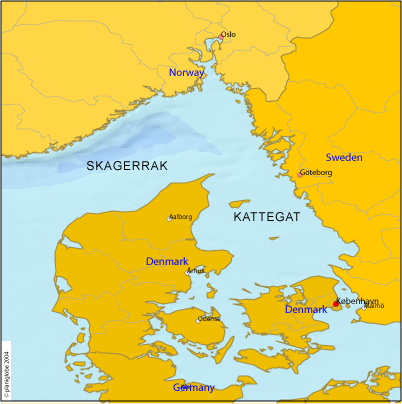
However, following the Kattegat strait, we stumble into a small archipelago blocking the passage from the strait to the Baltic Sea. Bypassing its islands, three straits lead to the Baltic - the Little Belt, the Great Belt and Oresund, the minimum width of which is 0,5, respectively; 3,7 and 10,5 km.
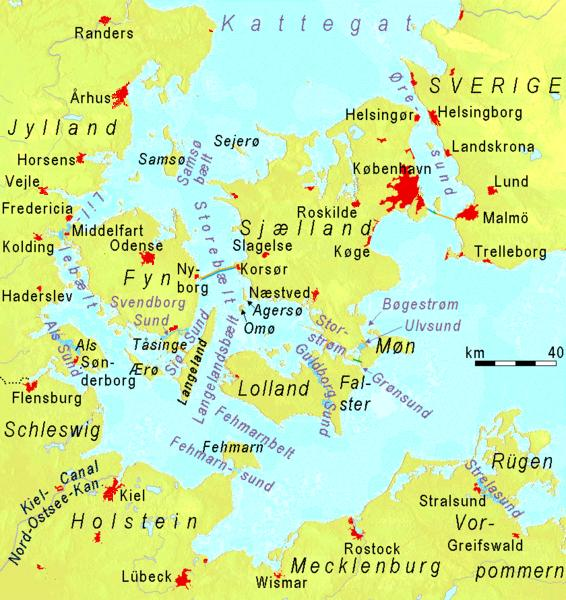
Obviously, it is here that the British would wait for the “hottest” meeting - to protect such straits based on coastal positions is very convenient, the defense will be extremely effective. But to break through such a defense using high-speed, but weakly protected ships of the Koreydzhes type is simply meaningless - here we need heavily armed and heavily armored ships capable of suppressing large-caliber coastal batteries, sustaining their return fire. In other words, for the breakthrough of the Danish Straits, battleships were needed, and it is difficult to figure out which class of ships would meet this assignment less than the small battle cruisers, which in essence were Korejges-type ships. Consequently, to break through the straits “big light cruisers” were not needed.
And finally, the last is the support of light forces. On this issue I would like to elaborate. Strictly speaking, there are two concepts of such support.
Option 1 - we a priori believe that our light forces should be able to “deal” with enemy ships of the same class and impute it to them. In this case, the task of the support ships is to prevent our light forces from “offending” the enemy support ships. For example, light cruisers and destroyers of the British and Germans were supported by battle cruisers, respectively, and both of them needed battle cruisers or similar ships as opposed to the "support" of the enemy. This does not mean, of course, that the battlecruisers should not have taken part in the rout of the enemy’s light forces, if they were given such an opportunity, but their main function is still not the case.
Variant 2 - we create ships not to fight with the support ships of the enemy on equal terms, but in order to quickly destroy enemy light forces and thereby ensure that our light forces carry out the tasks assigned to them. Take, for example, such an interesting class of ships as destroyer leaders. In those years when they appeared, light cruisers supported destroyers. The leaders, being, in fact, larger, high-speed and heavily armed destroyers, were still not able to fight equally with light cruisers, but they could quite effectively destroy enemy destroyers without distracting their own destroyers from the tasks assigned to them.
It is clear that such a division is very conditional, but the point is that ships of the Koreyges type did not answer the first, and were not optimal for the second of the concepts outlined above.
As we said above, support to the light forces of England and Germany was usually provided by the battle cruisers, but the Koreijzes, due to the extremely weak defense (compared to the battle cruisers), could not fight them on equal terms. Accordingly, they did not respond to the first of the concepts described above. On the other hand, the Koreyjes possessed an almost “unkillable” stronghold for medium caliber artillery at very high speed (surpassing that of light cruisers) and ultimatum-powerful guns. Thus, although they were not able to cover up their light forces from the enemy's battle cruisers, they could (at least in theory) quickly crush the enemy light cruisers, that is, disperse the light forces of the enemy and thus save their own; as if complying with the second concept we have outlined.
But the fact is that in order to destroy the enemy light forces, the “big light cruisers” were completely redundant. Recall that when England faced the task of protecting its communications from enemy light cruisers, it created the first heavy cruisers of the Hawkins type.
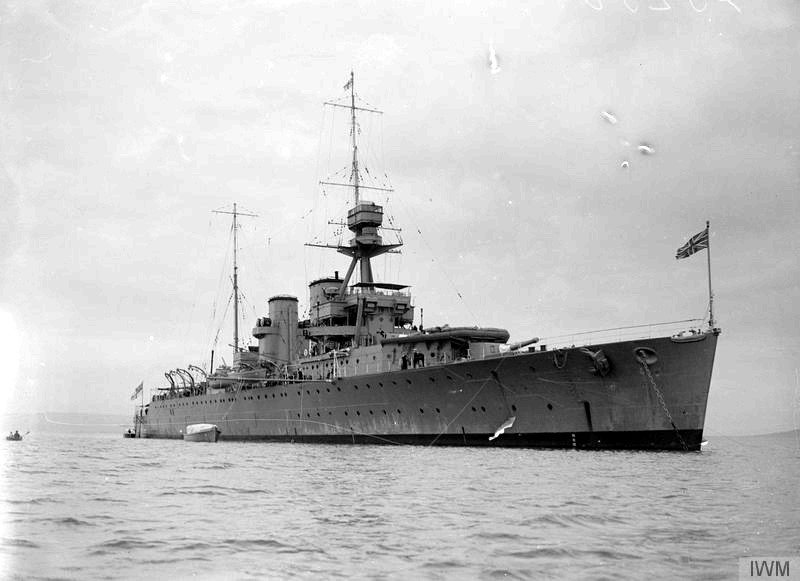
These ships had a sufficient combination of protection, speed and power of their 190-mm artillery, so as not to leave any of the light cruisers armed with 105-152-mm cannons, but their displacement did not exceed 10 000 t (in fact, about 9 800 t ). Such cruisers would be quite enough to lead the light forces - like the Koreijs they were able to smash the enemy light cruisers, just as the Koreijs could not withstand the battlecruisers, as well as the Koreizhes could escape them along with other light forces.
On the one hand, it can be argued that one “big light cruiser” can perform the functions of both the monitor and the heavy cruiser, but the monitor and the heavy cruiser cannot replace each other. But one monitor (8 000 t) and one heavy cruiser (9 800 t) together would appear to have a comparable price to the Koreijes, while the Royal Navy would receive two ships instead of one. And this gave a certain advantage: yes, Koreyjes could perform the functions of both of them, but could not do it at the same time. At the same time, the smaller firing range than that of the monitor seriously limited the range of tasks on the shelling of the shore, which he could perform. So, for example, the huge range of fire of the Erebus was dictated by the desire to get a ship that could fire at coastal targets outside the German 280-mm and 380-mm coastal guns located in Flanders, and Koreyjes obviously had this advantage. not possessed (or possessed, but to a much lesser extent). He, perhaps, could destroy enemy light cruisers somewhat more efficiently than the Hawkins would have done, but its size and cost did not allow to consider the Koreijs as a consumable material, which, by and large, recognized the English cruisers. In other words, it was too big a ship to risk it as much as lighter ones could risk.
Pocket battleships of England and Germany
The author of this article has repeatedly met "on the Internet" this point of view: the possibilities of "large light cruisers" of the "Koreydzhes" type and the Germanic "pocket battleships" of the “Deutschland” type are quite comparable. However, the Deutschlands are considered very fortunate ships, while the “White Elephants” of the Koreijs type are a deafening failure, and this is incorrect in relation to British shipbuilding.
Of course, there is a certain rational grain in such arguments, but still they cannot be considered true, and the thing is this. As you know, the Germans, designing their "pickpockets", wanted to get at the exit raiders, "destroyers" of the British trade, able to cope with its "defenders". In those years, the strongest ships, which were charged with protecting British communications, were "Kent" cruisers of the Kent type, which had a standard displacement of up to 10 000 and armament from 8 * 203-mm guns capable of speeds up to 31,5 knots.
What did the Germans do? They created a ship with a slightly larger displacement (the standard displacement of “pocket battleships” ranged from 11 700 to 12 100), which, due to the lower speed, received much more powerful weapons (6 * 283-mm) and had significant, if not the overwhelming advantage over the "Washington" cruiser in firepower. As a result, Germany’s “pocket battleship” was a type of ship that was really faster than almost everyone who could destroy it and stronger than anyone who could catch up with it - the only exception was the three battlecruisers of England, but you need to understand that they were sent to protect communications , in general, did not guarantee success in finding raiders, but significantly weakened the fleet of the Metropolis.
Of course, the Deutschland type ships were not ideal ships - here both features of the diesel power plant, and the relative weakness of the armor, which did not guarantee protection against 203-mm projectiles, and the number of high-speed heavy ships capable of charging and destroying “pocket battleships”, in the British and French fleets constantly grew. But still they retained their combat significance for a long time, at least as ships capable of "unraveling" the forces of the Grand Fleet and thus ensure the actions of the kriegsmarine battleships. And most importantly, being really stronger than the "Washington" cruisers, they were, at best, on 10-15% larger than the latter. In fact, the "pocket battleships" were a rather specific kind of heavy cruisers - and that’s that.
And what about Koreyjes? Of course, his range, seaworthiness and speed made him a very formidable ship for counter-raiders. He was faster, better armed, more protected ... But at what price were all these improvements bought? Beginning with 1914, the Germans laid down the Konigsberg-type light cruisers, which turned out to be the most modern, but also the largest among all German ships of this class. Their normal displacement was 5 440 T. And the “counter-trader” Koreizhes, as we recall, had a normal displacement of 19 320 T, that is, not by 15% and even not by 30%, but more than 3,5 times larger than it had German light cruisers, for which he should hunt. And the author of this article is quite sure that if the Germans instead of their “pickpockets” created ships in 35 thousand tons capable of destroying the “Washington” cruisers, but absolutely helpless in front of high-speed battleships and battle cruisers, then no one would call them great achievement of the German shipbuilding.
Продолжение следует ...
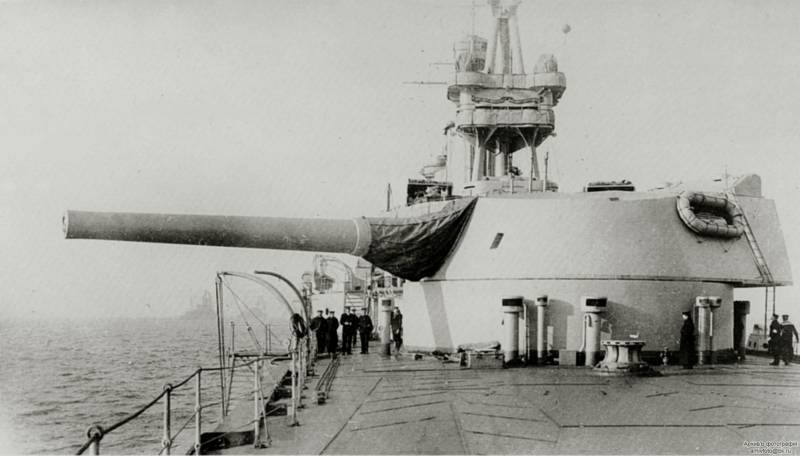
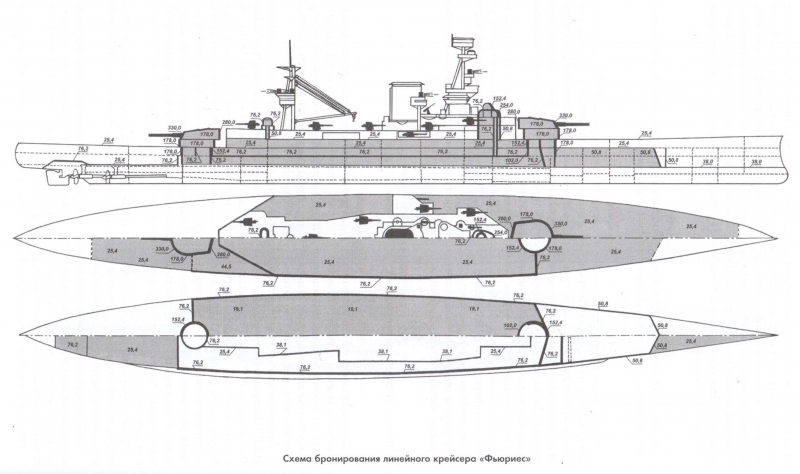
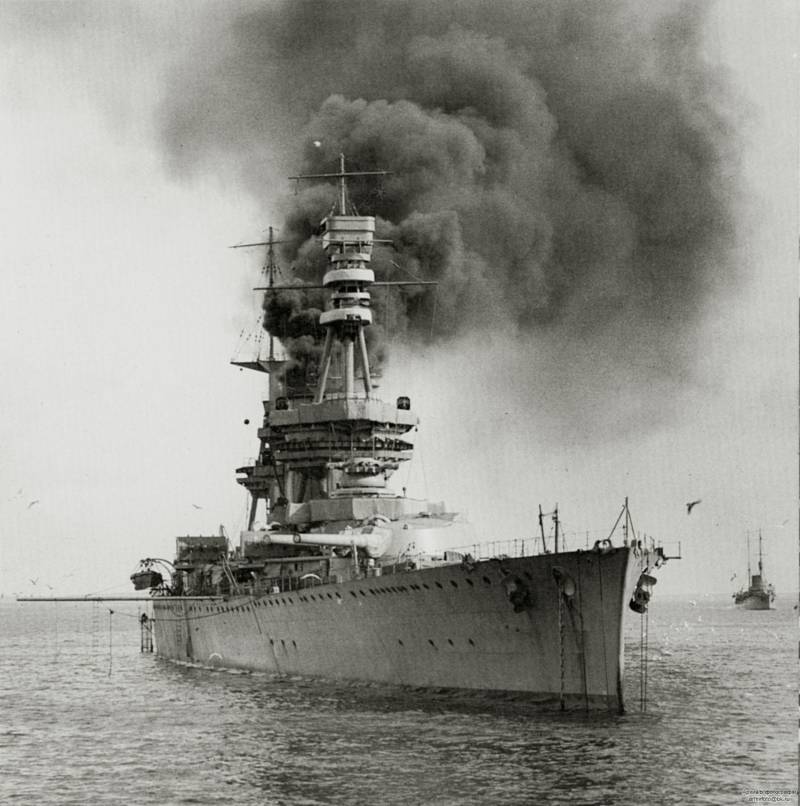

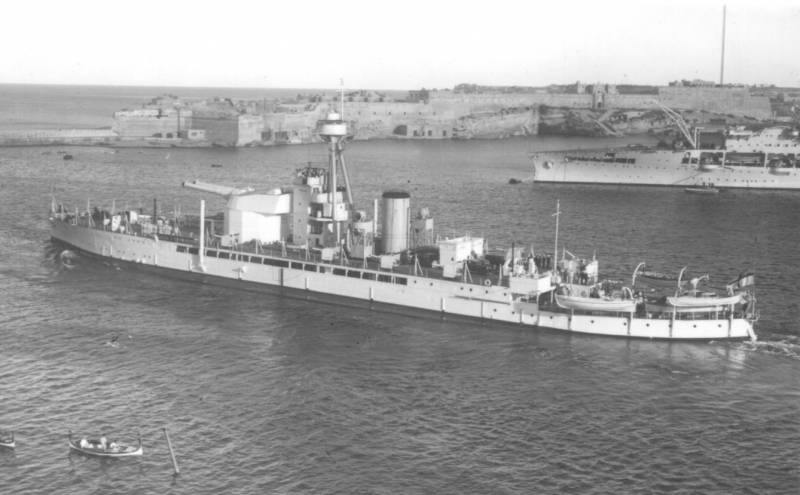
Information